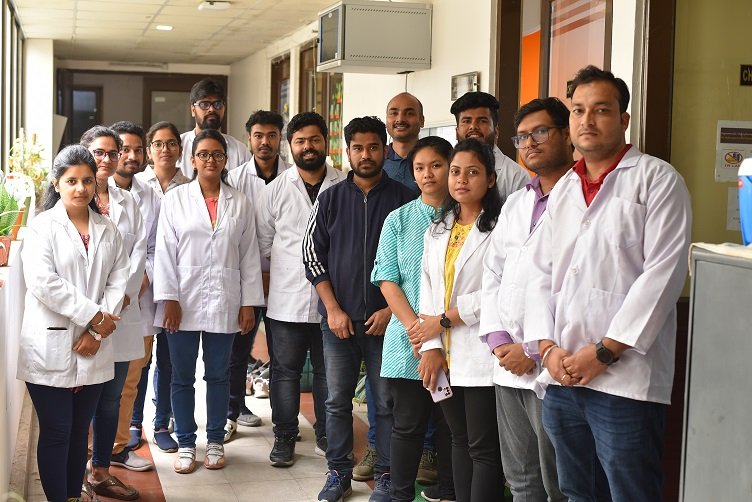Wednesday, 3 December 2025

The catalytic system produces hydrogen and formic acid from wood alcohol. This is a step towards achieving the Global goal of decarbonization of the planet set for 2050.
Researchers at Indian Institute of Technology Guwahati, led by Dr Akshai Kumar A.S., Associate Professor, Department of Chemistry, have developed a catalyst that can release hydrogen gas from wood alcohol, with no side production of carbon dioxide. Beyond being an easy and environmentally safe process, the method produces formic acid which is a useful industrial chemical. This development makes methanol a promising ‘Liquid Organic Hydrogen Carrier’ (LOHC) and contributes to the concept of hydrogen-methanol economy.
The IIT Guwahati team developed a special form of catalyst called the ‘pincer’ catalyst, which contains a central metal and a few specific organic ligands. It is called a pincer because the organic ligands are like the claws of a crab that hold the metal in place. Because of this special arrangement, the catalyst becomes very specific and selective. Thus, as wood alcohol is broken into hydrogen, formic acid is generated instead of carbon dioxide. The reaction takes place at 100 oC, much lower than the temperatures required for conventional methanol-reforming.
To make the catalyst reusable, the researchers loaded the catalyst on an inert support. By this, they could reuse the catalyst over many cycles.
ChemDist Group of Companies is the industry collaborator on this project. Speaking on the industrial potential of the research Dr. Sunil Dhole, Director, ChemDist Group of Companies, said, “Commercially speaking, the exciting fact about this work is that an abundantly available and cheaper organic chemical like Methanol can be converted to Hydrogen using a cheaper catalyst, at lower temperatures and without the emission of Carbon Di-oxide. This technology has the potential to make significant strides towards achieving carbon neutrality.”
As the world is moving towards finding alternatives to fossil fuels, hydrogen gas continues to be the best source of clean energy generation. Currently, hydrogen is produced either by the electrochemical splitting of water or from bio-derived chemicals such as alcohol. In the latter method, hydrogen is typically produced from methyl alcohol (commonly called wood alcohol) using a catalyst, in a process called methanol reforming.
There are two problems with the catalytic production of hydrogen from wood alcohol. The first is that the process involves high temperatures in the range of 300 oC and at high pressures (20 atmosphere). Secondly, the reaction co-produces carbon dioxide, which is a greenhouse gas. This is where the IIT Guwahati team has found a solution.
Explaining the significance of their work, Dr Akshai Kumar A.S., Associate Professor, Department of Chemistry, IIT Guwahati, said, “In methanol-reforming, in stark contrast to well-reported catalytic systems that act like Brahmastra and result in complete destruction to carbon dioxide, the current work involves a smart strategy to design pincer (crab-like) catalysts that selectively produce high-value formic acid and clean-burning hydrogen.”